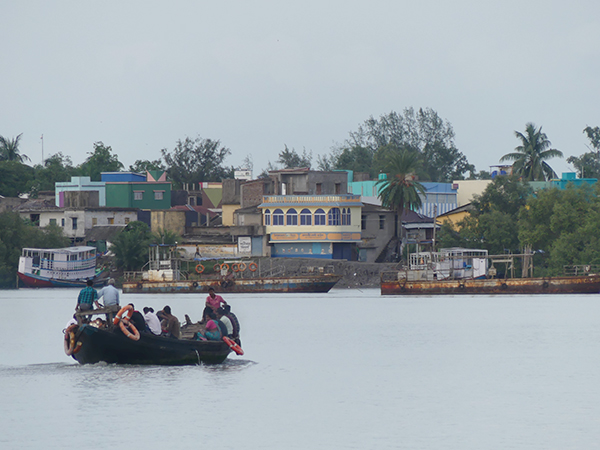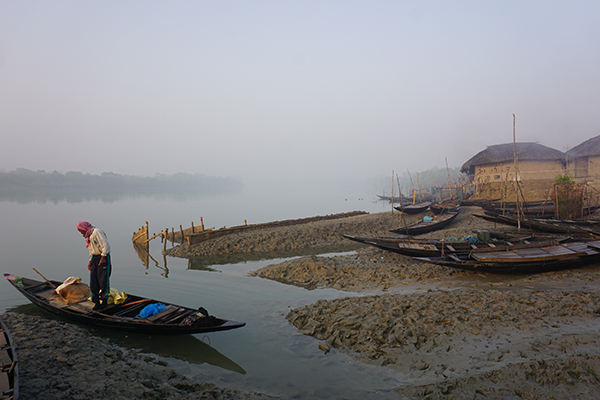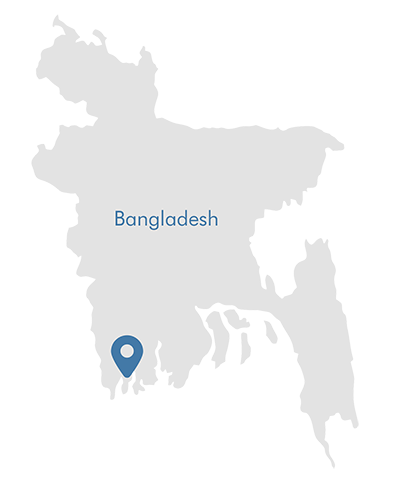india & BANGLADESH, EUROPE
Sundarbans
The Sundarbans is an extensive mangrove area in the delta formed by the confluence of the Ganges, Brahmaputra and Meghna rivers in the Bay of Bengal. The Sundarbans is home to the world's largest area of mangrove forests, covering an area of approximately 10.000 km², of which the forests cover 6.500 km² in Bangladesh's Khulna Division and 3.500 km² in India, mostly in the state of West Bengal.
What makes it special
The Sundarbans is home to the Bengal tiger, and it is one of the largest remaining habitats for these endangered big cats. Unique to this habitat is that the Bengal tigers in the Sundarbans have adapted to a semi-aquatic environment. Unlike other tiger populations, they are known to swim and can often be seen wading through the water.
Protection status
· Ramsar Sites 560 and 2370, Wetlands of International Importance
· UNESCO World Heritage Site
· UNESCO Biosphere Reserve
· Forest Reserve
· Wilderness Area (IUCN Category Ib)

Biodiversity
One of the largest remaining areas of mangroves in the world, the Sundarbans supports an exceptional level of biodiversity in both the terrestrial and marine environments, including significant populations of globally endangered cat species, such as the Royal Bengal Tiger. Population censuses of Royal Bengal Tigers estimate a population of between 400 to 450 individuals, a higher density than any other population of tigers in the world.
The property is the only remaining habitat in the lower Bengal Basin for a wide variety of faunal species. Its exceptional biodiversity is expressed in a wide range of flora; 334 plant species, 165 algae and 13 orchid species. It is also rich in fauna with 693 species of wildlife which includes; 49 mammals, 59 reptiles, 8 amphibians, 210 white, 24 shrimps, 14 crabs and 43 mollusks species. The varied and colorful bird-life found along the waterways of the property is one of its greatest attractions, including 315 species of waterfowl, raptors and forest birds including nine species of kingfisher and the magnificent white-bellied sea eagle.
The Sundarbans is of universal importance for globally endangered species including the Royal Bengal Tiger, Ganges and Irrawaddy dolphins, estuarine crocodiles and the critically endangered endemic river terrapin.

Local Communities
Due to the climatic conditions and constantly changing landscape, the Sundarbans are very inhospitable for human settlement and the threat of tropical diseases and parasites is high. Nevertheless, the Sundarbans has a population of over 4 million inhabitants, who live mainly from fishing, shrimp fishing and honey gathering. Honey collection is seasonally limited to a few months and is often carried out by migrant collectors. Shrimp fishing can be carried out all year round and is done with hand nets.
Threats
Lying in the low coastal zone makes the Sundarbans vulnerable to the effects of the changing climatic conditions such as floods, cyclones, relative sea-level rise, and coastline erosion. Rising sea levels in the region are notably higher than the global average, affecting protected habitats. Additionally, the area grapples with the exploitation of natural resources driven by poverty and inadequate infrastructure. The human population, heavily reliant on the forest for livelihood, engages in unsustainable practices, leading to habitat degradation and biodiversity loss. Furthermore, the close interaction between humans and wildlife in the Sundarbans results in a heightened human-wildlife conflict, with incidents of tiger attacks and other biotic hazards causing casualties and fostering hostility towards conservation efforts.

Our Work
Bangladesh Environment and Development Society (BEDS) is a non-profit organization established in 2010. The mission of the organization is to build the capacity of the most vulnerable communities in the region to ensure sustainable use of natural resources, provide eco-friendly means of living, reduce the adverse effects of climate change and improve their socio-economic condition while maintaining the ecological balance.
Bangladesh Environment & Development Society



